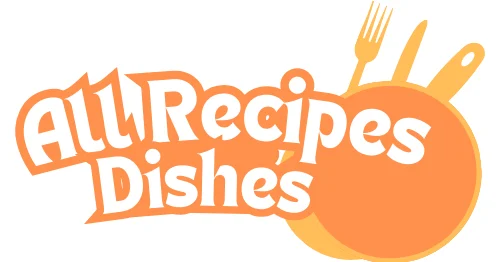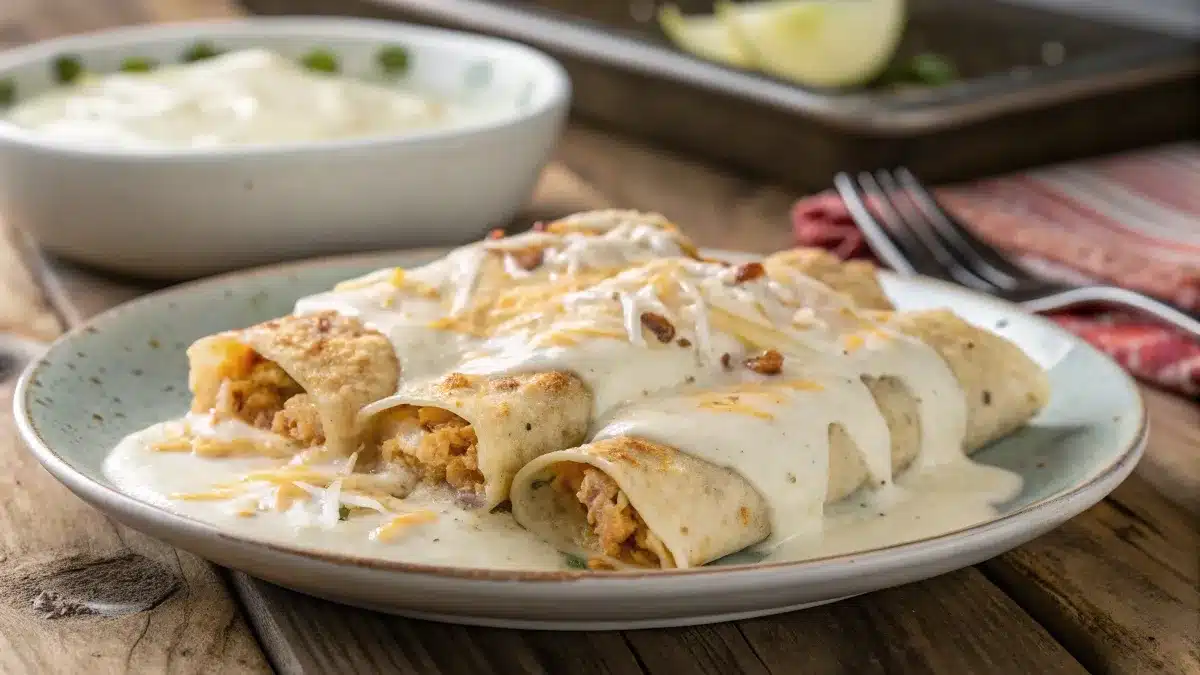The Ultimate Sour Cream Enchilada Sauce Recipe Guide for Perfect Flavor
Creating the perfect enchilada sauce can truly elevate your dish from good to unforgettable. In this comprehensive guide, we’ll walk you through an irresistible sour cream enchilada sauce recipe that’s both rich and easy to make at home. We’ll cover everything from essential ingredients to foolproof cooking steps, tips on avoiding common mistakes, and answers to popular questions like can you add sour cream to enchilada sauce? or what is the best melting cheese for enchiladas? Plus, we’ll share ideas for sides, storage hacks, and more. Get ready to master this creamy delight that will have everyone asking for seconds!
Check out our delicious Mexican cornbread casserole for the perfect pairing with these enchiladas
Table of Contents
Introduction to Sour Cream Enchilada Sauce Recipe
What is sour cream enchilada sauce?
Sour cream enchilada sauce is a smooth, velvety sauce that adds a creamy, tangy touch to enchiladas. Unlike traditional red or green sauces, this version relies on sour cream to deliver a luscious texture and a mild flavor that complements chicken, beef, or veggie fillings. This sauce, sometimes referred to as white enchilada sauce or creamy enchilada sauce, is especially popular in Tex-Mex and Southwestern kitchens.
What sets it apart? It blends the richness of dairy with subtle spices like cumin and garlic, often enhanced with green chiles or a hint of lime for brightness. It’s a go-to option for those who prefer a less spicy, more comforting topping for their enchiladas.
Why choose sour cream for enchilada sauce?
So, why use sour cream? First off, sour cream brings unmatched creaminess that clings beautifully to tortillas and fillings. It also balances stronger ingredients—like spicy peppers or sharp cheese—by adding a cool, mellow layer of flavor. Plus, it’s incredibly versatile. Whether you’re making chicken enchiladas or a veggie bake, sour cream sauce can transform the dish into something special.
Here’s a quick comparison table to see how sour cream stacks up against other enchilada sauces:
| Sauce Type | Texture | Flavor Profile | Best For |
|---|---|---|---|
| Red enchilada sauce | Thin, smooth | Spicy, smoky | Beef, pork enchiladas |
| Green enchilada sauce | Slightly chunky | Tangy, zesty | Chicken, seafood enchiladas |
| Sour cream enchilada sauce | Creamy, rich | Mild, tangy | Chicken, veggie, cheese enchiladas |
Looking for inspiration? Try our garlic parmesan chicken pasta that also celebrates creamy sauces.
Essential Ingredients for Sour Cream Enchilada Sauce
Key components for a rich and creamy sauce
Crafting the ultimate sour cream enchilada sauce recipe starts with just a handful of pantry staples and fridge favorites. Here’s what you’ll need to create that smooth, tangy, and flavorful sauce that perfectly coats every bite of your enchiladas:
- Sour cream: The star of the show. Choose full-fat for maximum creaminess.
- Butter: Adds richness and helps build the sauce base.
- Flour: Used to create a roux that thickens the sauce without lumps.
- Chicken or vegetable broth: Delivers depth of flavor while keeping the sauce from being too heavy.
- Garlic (minced or powder): Enhances the overall flavor with its aromatic punch.
- Green chiles: Adds a subtle kick and layers of flavor without overwhelming the sour cream.
- Cumin: A must-have spice for that classic Tex-Mex taste.
- Salt and pepper: Simple seasonings to bring it all together.
If you’re aiming for an extra tangy kick, a squeeze of fresh lime juice at the end works wonders.
Here’s a quick breakdown:
| Ingredient | Purpose | Tip |
|---|---|---|
| Sour cream | Provides creaminess & tang | Use room-temp sour cream to avoid curdling |
| Butter & flour | Create the roux for thickness | Whisk continuously to prevent burning |
| Broth | Adds moisture and flavor | Low-sodium works best for controlling saltiness |
| Spices & chiles | Infuse the sauce with Tex-Mex notes | Adjust to taste based on heat preference |
Discover great ideas like our Mexican vegetarian cheese Jiffy corn bread casserole for pairing with your enchiladas.
Variations and optional add-ins for extra flavor
One of the best things about making homemade sour cream enchilada sauce is how customizable it is. Here are a few optional add-ins that can make your sauce truly unique:
- Shredded cheese: Stir in some Monterey Jack or sharp cheddar for a cheesy enchilada sauce.
- Cilantro: Finely chopped for a fresh, herby finish.
- Jalapeños: If you want a bit more heat, finely diced jalapeños are a perfect addition.
- Onion powder or sautéed onions: For a touch of sweetness and depth.
- Smoked paprika: Introduces a subtle smoky flavor that pairs well with chicken or beef fillings.
These variations not only bring new dimensions to the sauce but also allow you to tailor it to your family’s taste buds.
Don’t miss our smothered chicken recipe for another creamy dinner idea!
Step-by-Step Sour Cream Enchilada Sauce Recipe
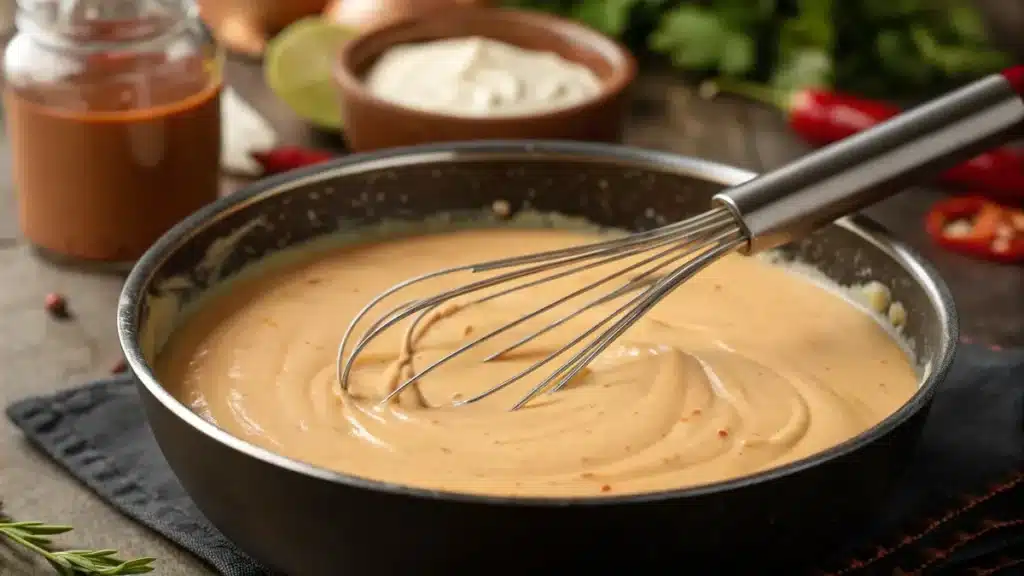
Detailed cooking instructions
Let’s break down how to make this creamy, dreamy sour cream enchilada sauce recipe right in your kitchen. The good news? It’s quick and easy, with just a few key steps:
- Melt the butter: In a medium saucepan over medium heat, melt 2 tablespoons of butter. Be careful not to let it brown.
- Create the roux: Sprinkle in 2 tablespoons of all-purpose flour. Whisk constantly for about 1-2 minutes until it forms a smooth paste. This is what will thicken your sauce.
- Add broth gradually: Slowly pour in 1 cup of chicken or vegetable broth while whisking. This keeps the mixture lump-free. Bring it to a gentle simmer until it starts to thicken—about 3-4 minutes.
- Add flavor: Stir in 1/2 teaspoon garlic powder (or 1 clove minced garlic), 1/2 teaspoon cumin, and 1 small can of diced green chiles. Let it simmer for another 2 minutes so the flavors blend.
- Incorporate sour cream: Remove from heat and slowly whisk in 1 cup of sour cream until smooth. If you want a touch of tang, add a squeeze of lime juice.
That’s it! You’ve got yourself a velvety white enchilada sauce ready to pour over your dish.
Here’s a handy table to guide your cooking times:
| Step | Action | Time |
|---|---|---|
| Melt butter | Medium heat | 1 min |
| Make roux | Whisk constantly | 1-2 min |
| Simmer with broth | Stir occasionally | 3-4 min |
| Add flavorings | Simmer | 2 min |
| Stir in sour cream | Off heat | 1 min |
Check out our homemade Cajun Alfredo sauce for another easy, creamy sauce you’ll love.
Common mistakes to avoid when preparing the sauce
While this sour cream enchilada sauce is pretty foolproof, here are a few pitfalls to steer clear of:
- Adding sour cream over direct heat: This can cause curdling. Always remove the pan from heat first.
- Pouring broth too quickly: Doing so can lead to a lumpy sauce. Slow and steady wins the race here.
- Skipping the roux: Without that butter-flour base, your sauce won’t achieve the silky consistency you want.
- Overcooking the sauce: Simmering too long after adding sour cream can break the sauce. Mix it in at the end and serve right away or keep warm on low.
Looking for inspiration? Try pairing your enchiladas with this Mexican beef and rice skillet for a hearty meal.
Can You Add Sour Cream to Enchilada Sauce?
How sour cream enhances enchilada sauce
Definitely! Incorporating sour cream into enchilada sauce enhances its creaminess and adds a subtle tang that perfectly balances bold spices and hearty fillings. When you mix sour cream into your sauce, it creates a smooth consistency that clings beautifully to tortillas, meats, and veggies alike. Sour cream is especially great for toning down heat, so if you’re working with spicy green chiles or jalapeños, it provides a creamy buffer that keeps every bite enjoyable.
This ingredient also brings a homemade charm to your enchiladas. Instead of the sharp bite of a red sauce or the tartness of tomatillo green sauce, sour cream gives you a subtle, mellow flavor that lets your fillings shine through.
Discover great ideas like our delicious Mexican cornbread casserole that pairs perfectly with creamy enchilada dishes.
Tips for blending sour cream without curdling
While adding sour cream can transform your enchilada sauce, you want to make sure it stays silky and smooth. Here are some essential tips to avoid curdling:
- Always remove the pan from heat before stirring in sour cream. Applying direct heat may cause the dairy to break or separate.
- Temper the sour cream. To prevent curdling, first whisk a small amount of the hot sauce into the sour cream to gently raise its temperature before combining it with the rest of the sauce. This gradual warming helps reduce temperature shock.
- Use full-fat sour cream. Lower-fat versions have a higher tendency to break apart under heat.
- Avoid boiling after adding sour cream. Gentle warmth is key to keeping the sauce smooth.
Here’s a quick reference:
| Tip | Why it works |
|---|---|
| Remove from heat before adding | Prevents overheating the sour cream |
| Temper sour cream | Gradually raises temperature to avoid curdling |
| Choose full-fat | More stable when heated |
| Don’t boil after adding | Boiling causes separation of dairy |
Don’t miss our Mexican vegetarian cheese Jiffy corn bread casserole for a perfect side to creamy enchiladas.
Can You Use Sour Cream to Make a Sauce?
Creating sauces with sour cream as the base
Yes, you absolutely can use sour cream to make a sauce! In fact, sour cream is a fantastic base for a variety of sauces thanks to its creamy texture, slight tang, and versatility. The beauty of a sour cream enchilada sauce recipe is that it demonstrates just one way this ingredient shines. Sour cream can be blended with herbs, spices, citrus, or other dairy products to create everything from dipping sauces to pasta toppers.
For enchiladas, sour cream forms the base of a smooth, luxurious sauce that doesn’t require complicated steps or fancy ingredients. Simply warm and whisk with broth, seasonings, and optional flavor boosters like green chiles or lime juice. The result? A sauce that’s rich but not heavy, tangy but not overpowering.
Beyond enchiladas, sour cream is the star in:
- Taco sauces with cilantro and lime
- Creamy dressings for taco salads or burrito bowls
- Quick pasta sauces with garlic and Parmesan
- Easy dips with chives, dill, or ranch seasoning
Sour cream provides that perfect middle ground between richness and lightness, making it a sauce superstar.
Popular dishes beyond enchiladas that use sour cream sauces
If you’re a fan of sour cream sauces, you’ll love how they pop up in all kinds of dishes. Here’s where you can put that creamy goodness to work:
- Chicken stroganoff: A tangy sour cream sauce coats tender chicken and mushrooms.
- Taco salads: Drizzle a sour cream-lime dressing for zesty freshness.
- Baked potatoes: Sour cream blended with herbs makes a stellar topping.
- Fish tacos: A cilantro-sour cream sauce pairs beautifully with crispy fish.
- Casseroles: Like our smothered chicken recipe, where a creamy sauce pulls everything together.
Here’s a quick cheat sheet for inspiration:
| Dish | Sauce Combo | Why It Works |
|---|---|---|
| Chicken stroganoff | Sour cream + broth + mushrooms | Adds richness without heaviness |
| Fish tacos | Sour cream + lime + cilantro | Balances crispy, spicy fish |
| Baked potatoes | Sour cream + herbs | Classic, cool topper |
| Casseroles | Sour cream + cheese + spices | Creamy binder for baked dishes |
Looking for inspiration? Try our Mexican beef and rice skillet as another delicious meal that welcomes a sour cream drizzle.
Will Sour Cream Break in a Sauce?
Understanding why sour cream sometimes curdles
You’ve likely heard the term “breaking” when it comes to sauces—and yes, sour cream can break if not handled correctly. But what does that mean exactly? When sour cream breaks, it separates into curds and whey, leaving your sauce looking grainy instead of smooth.
This happens because sour cream, like other dairy products, contains proteins that can’t handle sudden high heat. When these proteins are shocked—whether by boiling liquid or direct, intense heat—they seize up and clump together. The result? A sauce that’s lost its luscious texture.
Sour cream is particularly sensitive because of its acidity and lower fat content compared to something like heavy cream. But don’t worry—following a few key steps will help you avoid this pitfall!
Proven techniques to keep sour cream smooth in sauces
Here’s the good news: keeping your sour cream enchilada sauce recipe creamy and lump-free is easy when you know the tricks. Let’s break them down:
- Remove the pan from heat before adding sour cream. This step is crucial. Let the sauce cool slightly, then whisk in the sour cream gently.
- Temper your sour cream. This means adding a spoonful of the hot sauce to your sour cream first, whisking to combine, and then adding that back into the main pot. It helps the sour cream gradually adjust to the heat.
- Keep heat low once sour cream is added. If you need to warm the sauce again, use low heat and stir often.
- Choose full-fat sour cream. It’s more stable and less prone to curdling than low-fat varieties.
Here’s a quick visual guide:
| Technique | Benefit |
|---|---|
| Remove pan from heat | Prevents overheating the sour cream |
| Temper sour cream | Allows gradual heat adjustment |
| Low, gentle heat | Avoids breaking proteins in the sour cream |
| Full-fat sour cream | Greater stability under heat |
Don’t miss our homemade Cajun Alfredo sauce for another creamy option that handles heat beautifully.
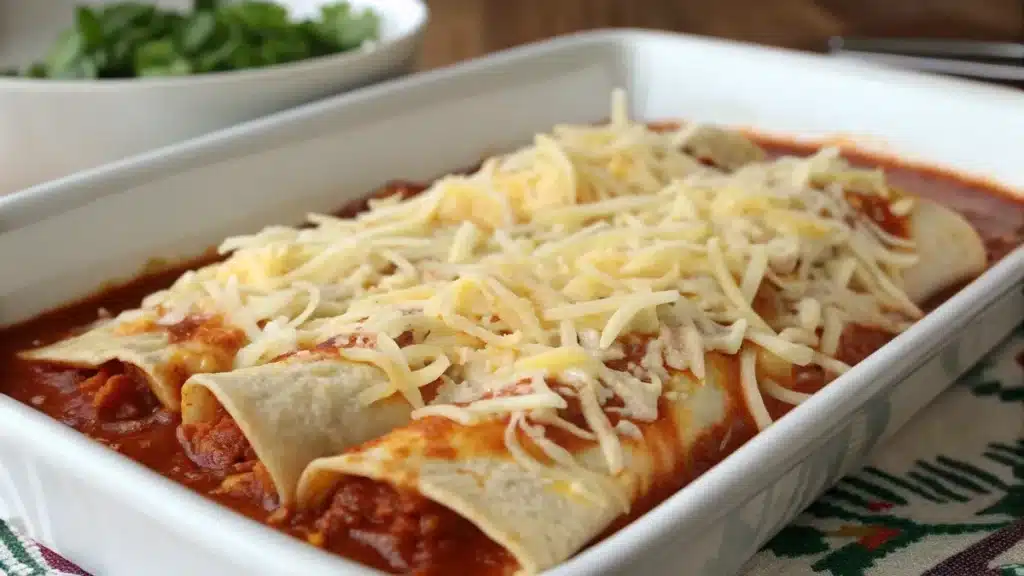
What is the Secret to Good Enchiladas?
Balancing flavors for irresistible enchiladas
When it comes to making enchiladas that truly wow at the dinner table, it’s all about balance. The sour cream enchilada sauce recipe plays a big role here, but great enchiladas come from how all the components work together—tortillas, fillings, sauce, and toppings in harmony.
Here’s what sets good enchiladas apart:
- A well-seasoned filling: Whether it’s shredded chicken, ground beef, black beans, or roasted veggies, your filling should be flavorful on its own before it ever hits the tortilla.
- The right tortilla: Corn tortillas provide that authentic texture and flavor, while flour tortillas create a softer, more pliable bite. Whichever you choose, warming them first prevents cracking during rolling.
- Balanced sauce: Our sour cream enchilada sauce offers a creamy, tangy base that keeps everything moist and ties the flavors together without overpowering the dish.
- Generous sauce coverage: Dry enchiladas? No thanks. Make sure every rolled enchilada gets a good coating of sauce before baking.
Here’s a simple flavor balancing table:
| Element | Key Tip | Why It Matters |
|---|---|---|
| Filling | Season well, taste as you go | Prevents bland bites |
| Tortilla | Warm before rolling | Stops cracking |
| Sauce | Generous coverage | Keeps enchiladas moist |
| Toppings | Choose complementing flavors | Adds color + texture |
Discover great ideas like our Mexican vegetarian cheese Jiffy corn bread casserole to round out your enchilada meal.
The role of sauce, cheese, and fillings
The trio of sauce, cheese, and fillings is what takes enchiladas from good to unforgettable. Here’s how to make each one count:
- Sauce: Choose a sauce that complements your filling. Our sour cream enchilada sauce is perfect for chicken, veggie, or cheese enchiladas because its creamy mildness lets the other flavors shine.
- Cheese: Melting cheeses like Monterey Jack, cheddar, or a Mexican blend give you that irresistible gooey layer on top.
- Fillings: Use moist fillings so the inside stays tender, but not so wet that the enchiladas fall apart. A little sauce inside the roll can help too!
Check out our Mexican beef and rice skillet for a flavorful filling idea you can adapt into enchiladas!
The Best Cheese and Baking Tips for Enchiladas
What is the best melting cheese for enchiladas?
If you want that picture-perfect, gooey, golden top on your enchiladas, choosing the right cheese is key. The best melting cheeses for enchiladas are those that not only melt smoothly but also add just the right amount of flavor without overpowering your sour cream enchilada sauce recipe.
Here are top picks for enchilada cheese:
- Monterey Jack: Creamy and mild, it melts beautifully and pairs perfectly with sour cream sauce.
- Cheddar: Adds a sharper, more pronounced flavor that contrasts nicely with creamy sauce.
- Mexican cheese blend: A mix of Jack, cheddar, queso quesadilla, and asadero cheeses—this is a safe, crowd-pleasing option that melts evenly.
- Queso Oaxaca or queso quesadilla: Both deliver that stretchy, authentic texture if you’re looking for something a little more traditional.
Tip: Shred your own cheese when possible. Pre-shredded varieties often contain anti-caking agents that can affect melt quality.
Here’s a quick comparison:
| Cheese | Flavor | Melting Quality |
|---|---|---|
| Monterey Jack | Mild, buttery | Excellent |
| Cheddar | Sharp, tangy | Very good |
| Mexican blend | Balanced | Very good |
| Oaxaca / quesadilla | Mild, creamy | Stretchy, smooth |
Don’t miss our smothered chicken recipe for another dish where cheese melt makes all the difference.
Should you cover enchiladas when you bake them?
This is a common question—and the answer is: Yes, at least at first. Covering your enchiladas helps lock in moisture, ensuring your tortillas stay soft and the sauce doesn’t dry out. Here’s a foolproof method:
- Cover with foil and bake for the first 20-25 minutes at 350°F. This allows the enchiladas to heat through while trapping steam.
- Uncover for the last 5-10 minutes so the cheese gets that golden, bubbly finish.
If you like a crispier top, leave them uncovered a bit longer at the end. Just be careful not to dry out the sauce or overcook the cheese.
| Baking Stage | Covered/Uncovered | Purpose |
|---|---|---|
| First 20-25 min | Covered | Keeps moisture in, evenly heats |
| Last 5-10 min | Uncovered | Browns and melts cheese |
Looking for inspiration? Try pairing your enchiladas with our Mexican vegetarian cheese Jiffy corn bread casserole.
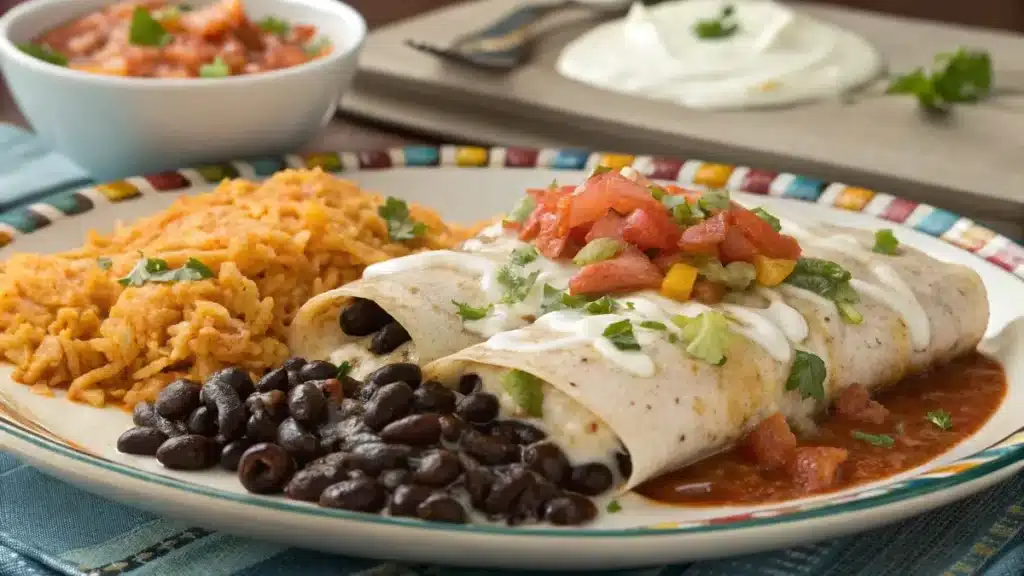
Serving Ideas, Storage, and Reheating Tips
What to serve with sour cream enchiladas
Your enchiladas deserve the perfect sides to round out the meal. Because a sour cream enchilada sauce recipe brings a rich, creamy element, it pairs best with sides that offer a little texture, freshness, or zest to balance things out. Here are some great options:
- Mexican rice or cilantro-lime rice: A classic choice that soaks up any extra sauce.
- Refried or black beans: Adds protein and heartiness to the plate.
- Crisp green salad with lime vinaigrette: Freshness cuts through the creaminess of the sauce.
- Mexican street corn (elote): Sweet, smoky, and a little spicy for a fun contrast.
- Cornbread or Jiffy corn bread casserole: The slight sweetness pairs beautifully with tangy enchiladas—check out our Mexican vegetarian cheese Jiffy corn bread casserole.
Here’s a side pairing cheat sheet:
| Side Dish | Why It Works |
|---|---|
| Cilantro-lime rice | Fresh and zesty |
| Refried beans | Creamy, hearty |
| Green salad | Adds crunch and lightness |
| Elote | Smoky-sweet contrast |
| Cornbread casserole | Sweet-savory pairing |
Best practices for storing and reheating
So, you’ve made a batch of delicious enchiladas—what about the leftovers? Good news: sour cream enchilada sauce holds up well with a little care.
Storing:
- Let enchiladas cool completely.
- Transfer to an airtight container or cover your baking dish tightly with foil.
- Store in the fridge for up to 3-4 days.
Reheating:
- Oven method (best): Cover with foil and warm at 325°F for 20-25 minutes until heated through.
- Microwave method (faster): Place individual portions on a microwave-safe plate, cover lightly, and heat in 30-second intervals until hot.
Tip: If the sauce thickens up a bit in the fridge, stir in a tablespoon of broth or milk before reheating to bring it back to creamy goodness.
Don’t miss our homemade Cajun Alfredo sauce for more sauce ideas that reheat well!
Conclusion
A well-made sour cream enchilada sauce recipe can transform a simple tray of enchiladas into a restaurant-worthy dish. By using full-fat sour cream, tempering it properly, and pairing your enchiladas with the right fillings and sides, you’ll have a creamy, flavorful meal that’s sure to impress. Whether it’s a weeknight dinner or a special gathering, this sauce will quickly become your go-to.
Looking for inspiration? Try our Mexican beef and rice skillet as a perfect companion dish to your enchiladas!
FAQs
Can you add sour cream to enchilada sauce?
Absolutely! Mixing sour cream into enchilada sauce results in a creamy, smooth texture with a subtle tang that complements spicy or robust fillings. To avoid curdling, add the sour cream only after taking the sauce off the heat. This technique produces a luscious, velvety sauce that perfectly coats your enchiladas.
Can you use sour cream to make a sauce?
Definitely. Sour cream is a fantastic base for all kinds of sauces. Its creamy consistency and subtle tang make it perfect not just for enchiladas, but also for taco toppings, pasta sauces, and dips. Mix it with broth, seasonings, and aromatics, and you’ve got a versatile sauce in minutes.
Will sour cream break in a sauce?
Sour cream can break or curdle if exposed to high heat or boiled. To avoid this, add it off the heat or after tempering it with a little warm sauce. Full-fat sour cream is more stable and less prone to breaking than low-fat versions.
What is the secret to good enchiladas?
The key to mouthwatering enchiladas is balance: flavorful filling, soft tortillas, a generous coat of sauce (like our sour cream enchilada sauce), and melty cheese. Covering your enchiladas while baking ensures they stay moist and tender.
What is the best melting cheese for enchiladas?
Monterey Jack is a top choice for its smooth melt and mild flavor. Cheddar offers a sharper taste, while Mexican cheese blends give you a combination of creamy and stretchy textures that work beautifully with sour cream sauces.
Should you cover enchiladas when you bake them?
Yes, covering enchiladas while baking helps retain moisture, keeps tortillas from drying out, and ensures the sauce stays creamy. Remove the cover during the last few minutes to let the cheese brown and bubble.
